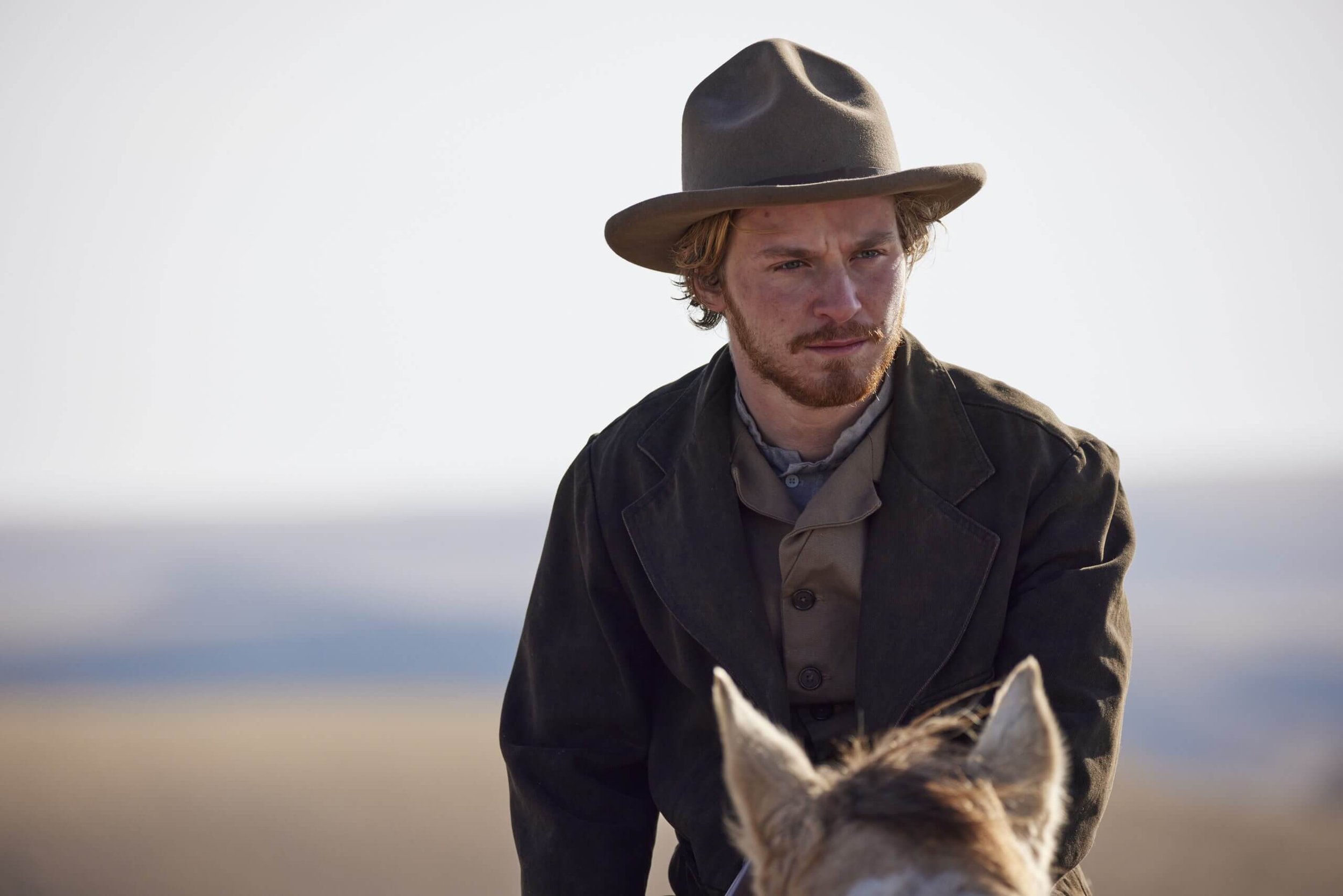Directed by: Gabe Polsky
Written by: Gabe Polsky and Liam Satre-Meloy
Starring: Nicolas Cage, Fred Hechinger, Jeremy Bobb, Xander Berkeley, Rachel Keller, and Paul Raci
Runtime: 105 minutes
‘Butcher’s Crossing’ offers remarkable footage and an important message, but narratively, the film doesn’t quite make the cut
Where would you take your dream vacation?
Maui? Walt Disney World? Los Angeles? Paris? London? Tokyo? The Bahamas?
In 2023, a family of four might choose one of those destinations, but in director/co-writer Gabe Polsky’s western, the year is 1874, and 20-something Harvard student Will Andrews (Fred Hechinger) wants to experience life.
So, he packs his bags, leaves Boston, and heads out west to the tiny municipality of Butcher’s Crossing, Kansas, where the harsh saloon whiskey might be the gentlest creature comfort in town. Its merchants and traders double as varmints and desperadoes.
This isn’t a place for its scenic views, but Will’s father knew a fella, J.D. McDonald (Paul Raci), who settled there to stake his claim, so the young scholar hopes to connect with him as a lifeline.
J.D. is a buffalo hide trader, who buys pelts for four dollars each, and Will decides to saddle up with a hunter and seek out 1,500-pound bison for commerce.
Okay, this is not a spring break escapade at Ft. Lauderdale, and Miller (Nicolas Cage) isn’t your friendly beach bartender. Well, he’s pleasant enough – at first - as this bald huntsman convinces Will to pay six hundred dollars to finance an expedition in Colorado, where Miller promises that an incalculable number of these mammals will roam an unchartered pass.
So, Miller, Will, an elderly carriage driver named Charley (an unrecognizable Xander Berkeley), and an ornery skinner named Fred (Jeremy Bobb) complete this somewhat fearless foursome in “Butcher’s Crossing”, a film adapted from John Williams’ 1960 novel of the same name.
Early on, “Butcher’s” seems like a typical, pragmatic western. The naive, inexperienced protagonist wades into foreign pools of rankled, coarsened lifestyles, and the grizzled veterans have weathered scores of distressing seasons as they embark on a demanding, dangerous trip.
All feels “right” in this troubled on-screen world, but this film features a buffalo hunt, and Polsky heavily bows into the sheer horrors of the late 19th-century practice.
Around 1860, approximately six million bison roamed North America, but hunters dramatically slaughtered the population. You wouldn’t believe the frightening facts and figures, and Polsky provides the sickening statistics at the film’s end.
So, this individual narrative – seemingly – mirrors the real-life descent, as Miller, Will, Charley, and Fred decline into madness, and the three latter men are helpless – for some unknown reason – to combat Miller’s psychosis.
Polsky, Cage, and cinematographer David Gallego effectively portray the insanity of the relentless killing, as Miller doesn’t exactly hunt here. Yes, he competently tracks his prey but then simply sets up camp and murders countless bison, like shooting fish in a barrel.
Target practice.
There is no defense for these animals; they are as powerless as Will, Charley, and Fred to stop Miller. It’s difficult to estimate the screentime of the constant bombardment of the dying four-legged targets. Maybe 40 or 45 minutes during the 2nd act, and Miller does take breaks to sleep and eat, but it all painfully feels like forever, and credit the cast, crew, and also co-writer Liam Satre-Meloy for placing us in anxious spaces by design.
No, the movie’s problems lie elsewhere. As mentioned earlier, the narrative plays out as a microcosm of the hunting period’s insanities, and it’s sometimes reflected in some bizarre dream sequences, maybe three or four, where reality fades away, and cerebral shadows within Will’s mind play out cinematically.
Embers from a campfire float and fly around, glimpses of Miller’s gunshots, severe weather, and more twirl about the screen to communicate our lead’s friction. Hey, his callus-less hands and big-city background are no match for Colorado’s high country, and the endless carnage and skinning wear on Will’s brain and body like a hacksaw grating through a stick of warm butter.
These step-away-from-reality moments are arthouse affairs, so this creative decision becomes a matter of taste. It may work well for some audiences, but these scenes distract from the compelling narrative (in my mind), as flat-out stress and strife through combative discourse and physicality would trump the artistic interpretations.
In a couple of cases, they don’t quite make sense. For example, the party desperately searches for water, and Will suffers the most during a taxing stretch. So, he visualizes mirages in a dizzying montage, but their problems are suddenly solved without an explanation or fanfare, so our investment in the team’s collective thirst becomes wasted. In a different instance, our bleak band struggles in severe snowy weather, but then Will seems to stroll along in a budding springtime forest. Is it spring? It might be. Is he dreaming? Possibly, because the glum gang then reverts to dealing with winter.
Also, in an isolated puzzling (albeit brief) scene, Charley – who lost his left hand before this adventure – miraculously gains it back, while the right one becomes absent. Which one is missing again?
Another missing feature is depth with the characters. The four feel one-dimensional, as they regularly pan over the same middling discussions about Miller’s obsession, Charley’s religious beliefs, Fred’s corruption, and Will’s blank slate. Sure, this tetrad isn’t the country’s finest and brightest, so the unexceptional exchanges are probably accurate but contrast these American blokes with the remarkable color of four travelers in S. Craig Zahler’s dastardly “Bone Tomahawk” (2015). Zahler’s script constantly feeds his four stars – Kurt Russell, Matthew Fox, Patrick Wilson, and Richard Jenkins - with engaging lines and character insight.
We are invested in those characters!
In “Butcher’s Crossing”, not so much.
Even though Miller, Will, Charley, and Fred become villains against nature, it’s an emotional tussle to feel for anything for them other than yearning to reach through the screen and rip the gun from Miller’s grip. Cage certainly is a fearsome force. In a striking visual, Polsky and Gallego offer an assist by capturing steam and smoke emanating from Miller’s head.
However, Will’s arc muddles in the grassy highlands and bloody skins as Hechinger’s character tussles about in this miserable environment. His boyish smile has long passed from his face, and the film is told through his eyes, his perspective, but his words and actions – by and large – remain mute and uninspiring.
Well, credit the movie’s vocal, troubling message of the bison plight, the Blackfeet Nation in Montana for providing the land, and the Blackfeet Tribe Buffalo Program for handling the unquestionably remarkable footage. No question, the fantastic plethora of these majestic animals is a sight to behold.
However, as a whole, “Butcher’s Crossing” doesn’t quite cut it…even on a holiday.
Jeff’s ranking
2/4 stars














